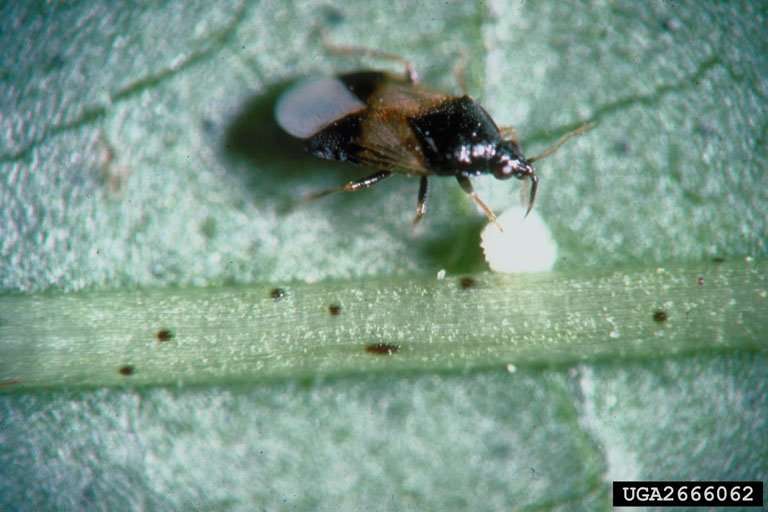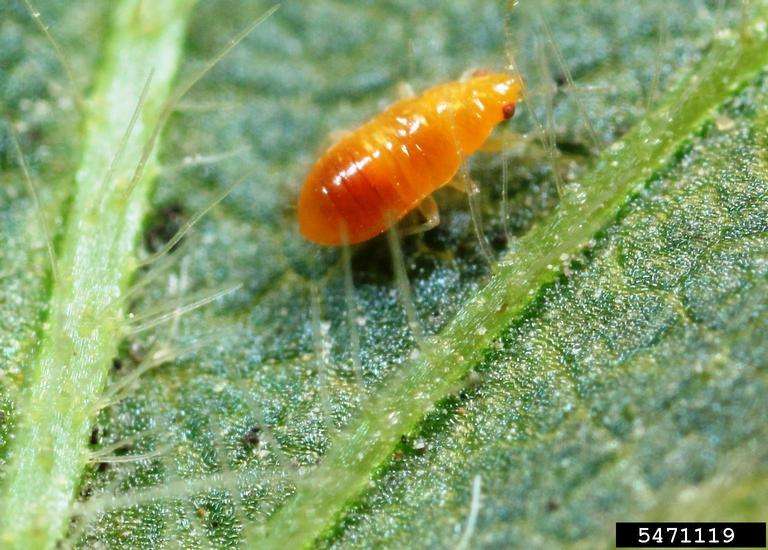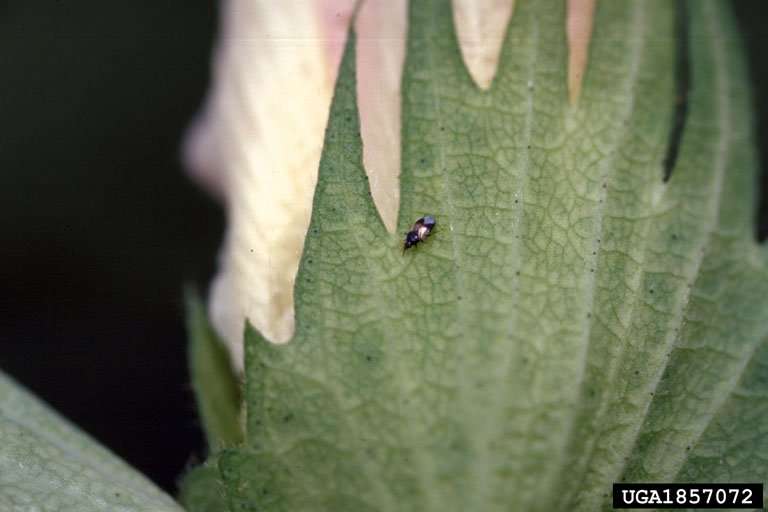
Summer is known as the season for bugs – but not all of them are pests! Some insects, such as the minute pirate bug can be beneficial to your yard. In fact, these insects are so beneficial that they are commercially available to help farmers keep pests manageable. Let’s learn more about these critters and how they can benefit you!
Minute pirate bugs fall under the Orius genus, meaning they are true bugs. They can be found throughout North, Central, and South America, but are most commonly found here in the eastern United States. These teeny tiny bugs can create a big difference in your garden!

About the Minute Pirate Bug
Minute pirate bugs can be black or black and white, they are oval-shaped and usually less than 3 millimeters big. They only live for a few weeks but are active all summer.
Their short life cycle consists of three main stages:
- Egg: Minute pirate bug eggs are laid directly into plant tissue. The eggs are carefully nestled so that part of the egg is in the plant tissue, and part of it is exposed above the surface. They hatch within 4-5 days of being laid.
- Nymph: In this wingless stage, the bugs undergo several molts over the course of 2-3 weeks. The nymphs are easily identified by the bright orange color they possess in this stage.
- Adults: After the final molt, the minute pirate bug is now a winged adult! They live their lives eating, mating, and laying eggs for the next 3-4 weeks. Females lay between 80-100 eggs in their lifetime. During the colder months, adults go into diapause (a period of dormancy with no reproduction). They will hide away in leaf litter or in cracked tree bark until the spring.

Benefits of Minute Pirate Bugs
What makes minute pirate bugs so beneficial is their predaceous diet. In addition to being omnivores, these bugs are also a generalist species. This means they do not rely on a single food source, but can consume a wide variety of species. Orius spp. have a vicious bite – their mouths are needle-like, allowing them to pierce their prey. They are the perfect little predators to clean up garden pests that may be harming your plants!
Some common pests that they consume include:
- Aphids
- Whiteflies
- Thrips
- Caterpillars
- Spider mites
- Plant lice
- Insect eggs
In addition to eating pesky bugs, minute pirate bugs also harmlessly munch on pollen and other plant material. No worries though, they won’t cause any perceivable damage to your plants – unlike the pests that they eat. Check out this article to learn more about pests that pose a threat to your plants.

Do You Have These Beneficial Insects?
Due to their miniature size, it can be hard to spot a minute pirate bug. If you want to spot them, you will need the help of a magnifying glass. They are usually found hanging out on flowers on hot summer days. In fact, you may not even know you have them until you get a prick from its sharp mouth! Their bite is similar to a mosquito bite – but unlike mosquitoes, these bugs aren’t trying to snack on you. As autumn approaches and minute pirate bug’s food supply dwindles, a curious one may take a bite to check you out, but they aren’t seeking you out. As the weather cools down they become less active and eventually go into diapause for winter.
Ways You Can Help
The best way to help this little bug help you is by giving it a good habitat.
- Plant more flowers! Minute pirate bugs love flowers, they can plant their eggs in them and eat the pollen. You will also attract beneficial pollinators! These bugs also love crops like tomatoes and corn.
- Skip the pesticides. Common insecticides can wipe out beneficial insects along with pests. If you are concerned about pests but want to keep the good bugs around, check out our Organic Mosquito and Tick Program!
Minute pirate bugs are tiny but can make a big impact on your plants’ health. This holiday weekend go out and explore your garden to see if you can spot these beneficial insects!
